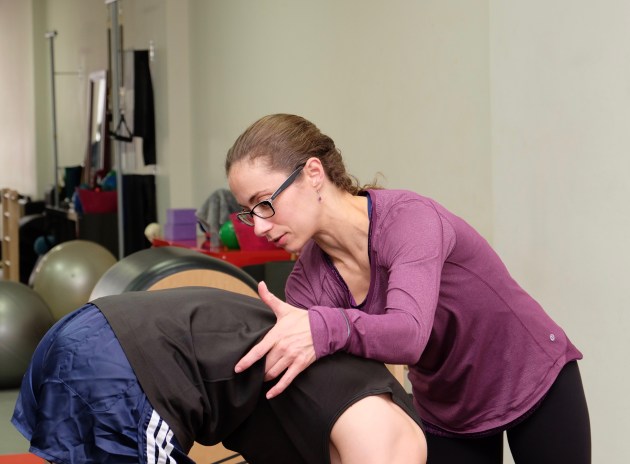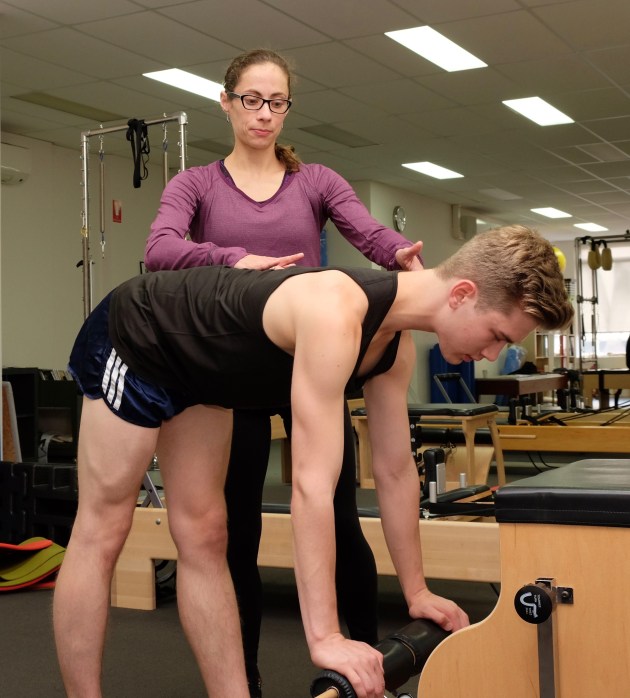When NOT to stretch
Stretching is a standard part of a dancer’s exercise regime. But there are times when it shouldn’t be done. Susan Bendall talks to exercise physiologists Liz Hewett and Donna Oliver.

It is almost impossible to think about dance without conjuring the notion of stretching. Those who are super-flexible or hyper-mobile often love the sensation of a good, long, stretch. Those who struggle with flexibility may either avoid stretching or overdo it in an attempt to improve. The good news is that you can improve your flexibility. The bad news is that each body has its own natural range which places limits on how far we can push it without doing damage.
Liz Hewett and Donna Oliver are both experienced exercise physiologists and former dancers. According to Liz Hewett: "There are two main reasons why dancers need to stretch. The first is short term: to help them feel limber enough to do class. The second is to improve and maintain overall range of movement. The choice of technique used for stretching will be governed by the risks versus benefits of that technique."
Are there any common myths or misconceptions surrounding stretching?
Liz and Donna cited four key myths.
Myth #1. Failing to stretch will lead to decreased flexibility
The idea that a muscle will shorten is misleading. Neurologically, when a muscle nears its end of range, muscle proprioceptors message the brain to produce the sensation that lets you become consciously aware that you are approaching the “danger zone” where the tissue may be at risk. Regular stretching dampens the response, increasing the tolerance to stretching. Therefore, you can move the muscle through a slightly greater range without the sensation being triggered. But … the danger zone is still probably the danger zone.
Myth # 2. Stretching helps relieve sore muscles
This possibly depends on the intensity of activity and the type of muscle soreness.
Stretching should probably be avoided if the soreness in question is acute and present during or up to 30 to 60 minutes after exercise, as it may cause micro-damage. By contrast, delayed onset muscle soreness which occurs 24 to 72 hours post-activity is caused by enzymes and other chemical irritants around the muscle fibre. Moderate exercise and gentle stretching of the muscle increases the blood flow and can flush the irritants out of the area.
Myth #3. Stretching reduces the chance of injury
Although there is no evidence to suggest that stretched muscles are any less prone to injury, it is commonly thought that a warm up that includes dynamic stretching creates an increased viscosity in the connective tissues which allows a bit more “give” and perhaps may protect against injury.

Myth #4. You can ‘stretch it out’
An acute “pulled muscle” cannot be healed or improved through stretching and in fact it might aggravate the injured tissues.
Why do you think these myths persist?
Donna: It takes a lot to shift someone’s paradigm – especially if someone you greatly respect has introduced you to a technique.
Liz: Techniques introduced by influential health practitioners can become as entrenched as gospel.
In general terms, what is happening when we stretch?
Donna: There are three systems that are involved in stretching. Firstly, the muscles and tendons. Muscles are made up of elastic and non-elastic components and all muscle fibres are surrounded by connective tissue like a glove surrounds your fingers. It is not the muscle fibres that stretch but the connective tissues. The nervous system is involved in firing off messages to the brain that danger may be looming. Then, remember, the function of a ligament is to hold the end of your bones together in a stable manner. Stretching a ligament increases the amount of “give” in a certain direction while decreasing the stability it provides to the joint. It’s a trade-off …
As dancers, the requirement for flexibility is extreme but can we overstretch? How common is this and what are the dangers?
Donna: Overstretching is common, with the belief that if stretching is good, then more stretching must be better! The main culprits in terms of reasons for overstretching include the influence of social media and the culture of “tricks” over artistic interpretation, which are both largely based on competitiveness. In the professional world, repertoire that requires extreme flexibility sees company members selected based on their natural ability. Not every dancer can dance every role.
Liz: In terms of dangers, flexible dancers may overstretch ligaments that are already lax, compounding the joint hypermobility and leading to potential injury. In contrast, for those with genetically restricted mobility, they might be pushed into extreme ranges that are probably not structurally safe due to how their skeleton is built. For example, pushing the feet under the lounge to improve ankle motion can lead to injury rather than increased mobility. Those with restricted ankle flexion might be harmed by going onto pointe.
Are there any guidelines on stretching for different age groups or is it more dependent on the individual body?
Donna: There are no formal guidelines or recipe books for stretching. It does require the teachers and dancers and those caring for dancers to understand some fundamental scientific principles of stretching and each individual dancer’s growth status. As a general rule, try to balance benefit and outcomes versus the risk. It is true that adolescent dancers typically feel a loss off flexibility during growth spurts due to muscles not lengthening at the same rate as bones. Other considerations include gender, age and individual genetics. Girls are also more flexible than boys when age-matched. Range probably stabilises at a certain point when growth slows and then episodically decreases during rapid growth spurts during adolescence.

Are there any specific stretches that should be avoided?
Liz:
- Any prolonged stretch held for 20 minutes or more. Three to five repetitions of a 30-second hold is sufficient to increase range of muscle tissues
- Partnered stretches, unless guided by a professional
- Side split stretches that takes a dancer into pain in their hips rather than muscles
- Frog – on tummy
- Roll throughs
- Extreme and strong back extension stretches: for the adolescent dancer there is a risk of injuries to the developing spine
If you had three rules about stretching, what would they be?
- Less mobile students should engage with flexibility training, while more flexible students should focus on active strength and control through their available range.
- Stretching should not extend beyond the visual aesthetic needs of the dance form. Aspire to what is happening in professional dance companies, not what’s on Instagram!
- Prolonged and intense static stretching should be avoided prior to performance as it negatively affects power generation for movements like jumping.
This article first appeared in the June/July/August issue of Dance Australia. Be the first to know! Subscribe to Dance Australia here and never miss a copy, or buy single copies here.


